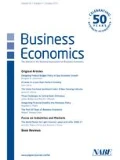Notes
The OECD/G20 BEPS project has been comprehensive and sophisticated. An effort begun in 2012, the OECD BEPS Multilateral Instrument consisting of fifteen actions, which was adopted at the end of 2016, and has since been signed by over 78 jurisdictions. It came into force in July 2018. Under its inclusive framework, over 100 countries are collaborating to implement the BEPS measures. The 15 actions equip governments with the tools to address tax avoidance, ensuring that profits are taxed where economic activities generating the advantages are performed, and value is created.
Formulary apportionment, also known as unitary taxation, is a method of allocating profit earned (or loss incurred) by a corporation or corporate group to a particular tax jurisdiction in which the corporation or group has a taxable presence. It is an alternative to the separate entity accounting approach of the ALP. In contrast, formulary apportionment attributes the corporation's total worldwide profit (or loss) to each jurisdiction, based on factors such as the proportion of sales, assets, or payroll in that jurisdiction.
According to the authors.
Here risk connotes basic economic risk-bearing within the confines of the multinational group. Examples include inventory risk, exchange rate risk, financing risk, including indemnification and guarantee fees, and cost sharing. An entity bearing risk does so in hopes of earning a commensurate reward. More risk-taking by an entity implies a higher return to that entity’s functions.
In total, the BEPS project received more than 1400 submissions from industry, advisers, NGOs, and academics, totaling approximately 2000 pages of comments. Further, 11 public consultations were held, gathering viewpoints from a variety of stakeholders across the international tax spectrum.
Author information
Authors and Affiliations
Corresponding author
Additional information
Publisher's Note
Springer Nature remains neutral with regard to jurisdictional claims in published maps and institutional affiliations.
Rights and permissions
About this article
Cite this article
Seeger, W.J. Richard Collier and Joseph Andrus: transfer pricing and the arm’s length principle after BEPS. Bus Econ 54, 182–184 (2019). https://doi.org/10.1057/s11369-019-00119-6
Published:
Issue Date:
DOI: https://doi.org/10.1057/s11369-019-00119-6

